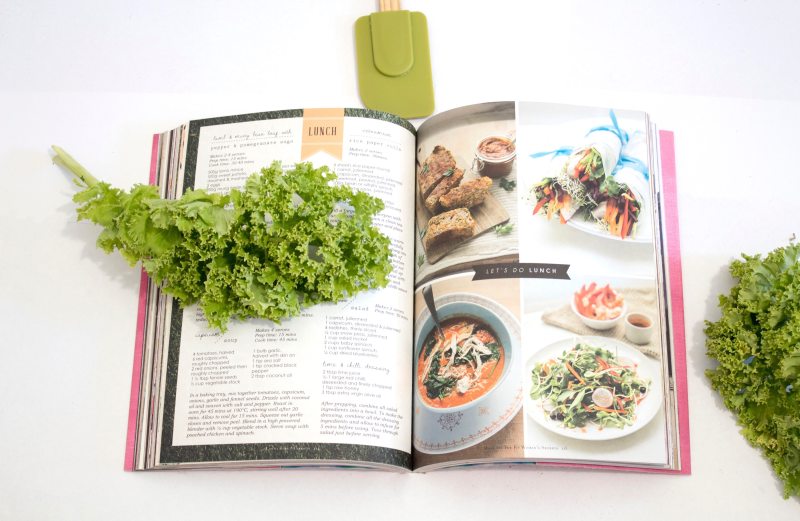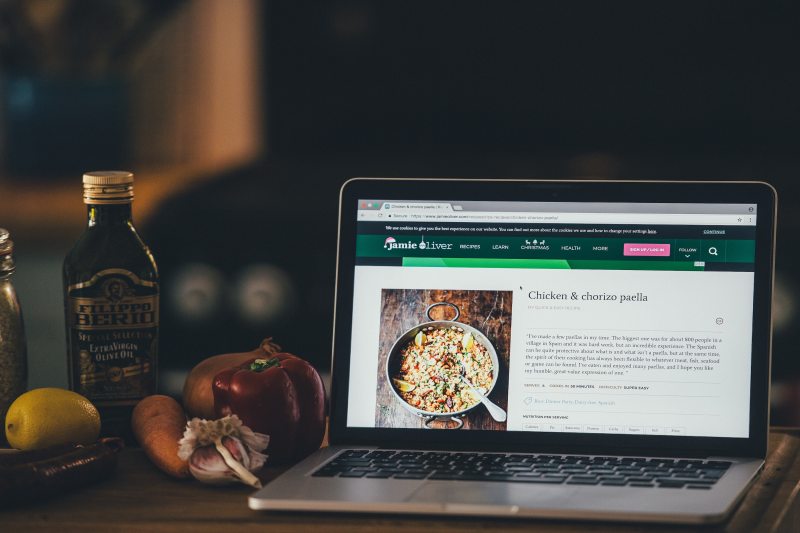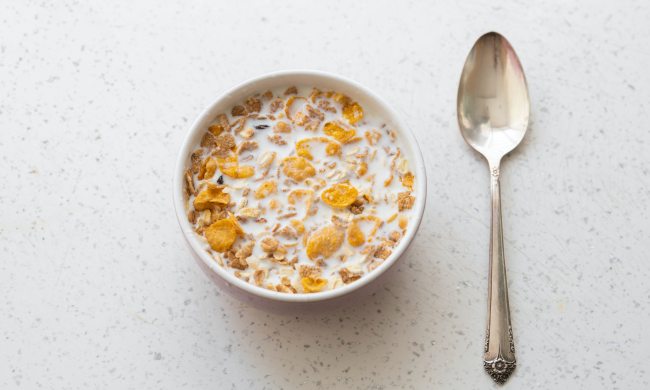
If you’ve ever felt overwhelmed while browsing the aisles of the grocery store, waiting for inspiration to strike in order to give you some sense of direction in terms of what to buy and cook, you’re not alone. Many people shop and cook off the cuff without planning meals in advance. While this certainly can work, it’s not without its pitfalls: You may get stuck in a rut and continually make the same few dishes over and over—limiting the variety in your diet necessary for optimal nutrition—or you may forget ingredients you’ll end up needing or buy things that don’t go together in a cohesive meal.
Meal planning solves many of these issues and can help save time, money, and potential last-minute secondary trips to the store to pick up ingredients you didn’t know you’d need. Meal planning also makes it easier to stay on track with diet and weight loss goals, and eat balanced, nutritious meals throughout the week with plenty of variety. Although it may seem intimidating to delve into meal planning if you’ve always been spontaneous when it comes to grocery shopping and cooking, it’s actually quite simple to get started planning your weekly meals and most people find meal planning makes the entire process of preparing food more efficient and effective. To help get the best tips and advice on how to get started with meal planning, we spoke with Anna Rios , RDN, a Registered Dietitian Nutritionist and recipe developer. Keep reading to learn how to simplify and streamline your meal planning process.
Meal planning can save time and money and prevent food waste by ensuring you’re only buying what you need and not ending up with odds and ends or extra ingredients that will spoil. Moreover, if you shop spontaneously, you may end up needing to take multiple trips to the store to gather everything you ultimately end up needing to prepare your meals. Rios adds that meal planning can improve the quality of your diet and reduce stress as well. “Meal planning makes it a lot easier to stay on track and eat balanced meals throughout the week,” she notes. “It also gives you peace of mind because you have a plan in place instead of having to figure out what to eat last minute.”

Meal planning is actually quite simple and can be broken down into a few simple steps:

Rios says the most important factors to take into consideration when meal planning include your budget, dietary restrictions, health goals, time, and food preferences. It can also be helpful to consider what you have on hand already and what produce or foods are in season. If you’re working on a tight budget, before picking your recipes, you can browse the flyers (online or via paper mail) from your local grocery store to note any upcoming sales or clip available coupons. Once you know which foods are on sale, you can search for recipes that will incorporate these deal items to cut costs. This way, you can take advantage of the cost savings without having to think on your feet at the store and come up with a recipe that will use the sale ingredients on the spot.
Another benefit of meal planning is the potential to make it easier to align what you actually end up preparing and eating with your dietary goals. All too often, people set intentions to eat healthily or follow a certain dietary plan like the Mediterranean Diet or the DASH Diet, but all this can get thrown out the window when spontaneously shopping or trying to cobble together a meal last minute with whatever ingredients you have on hand.
“In general, you want to make sure to include the following food groups at every meal—proteins, complex carbohydrates, vegetables, and healthy fats. Including all food groups will assure proper nutrition, energy and will keep you full until your next meal,” explains Rios. “It’s also important to check in with a registered dietitian if you have health concerns. Everyone is different and dietary needs vary from person to person.”
Rios says there are a few common pitfalls or barriers to meal planning, but these can be easily avoided. “Making unrealistic goals can often leave us feeling overwhelmed,” she explains. “I recommend making realistic and attainable goals—start small! For example, begin by meal planning 1-2 days out of your week and build up from there. You can also make a small goal like adding more plant-based meals and prepping them before the week starts.”
She also says that meal planning offers a chance to add variety to your diet, which is not only optimal from a nutrition standpoint but also can keep eating fun and exciting. After all, eating the same meals day after day or week after week can get boring. “Make sure that you allocate 15-20 minutes once a week to look for new recipes or remake old favorites,” she advises.

Rios says there are a lot of resources online that can help with meal planning. “Looking for recipes through Pinterest, MyPlate.gov , recipe blogs, and YouTube can be a big motivator,” she shares. “I love using Pinterest to help organize my recipe categories from ‘quick and easy meals’ to ‘date night dinners.’ Finding new and exciting recipes can also motivate you to stay on track.”
One common concern when it comes to meal planning is that people worry that they’ll plan a meal that they simply don’t feel like preparing or eating once that day rolls around. Rios says this problem can be sidestepped by taking a flexible approach to your meal planning. “Create a flexible meal plan so that you are able to eat intuitively. If you don’t feel like having a burrito bowl one day, make another meal that you planned for that week,” she says. “It’s also important to have backup recipes that are made using similar ingredients so that you can modify the meal if needed.” In other words, allow yourself the freedom to shift things around a bit. Your meal schedule doesn’t have to be written in stone.
Once you form the habit, meal planning is actually quite simple and can streamline mealtime in your home. It will save time and money, and keep you on track with diet goals. “Meal plan meals are ones you look forward to eating. If there is a dish that you absolutely love, make a double batch to have leftovers the next day,” suggests Rio. “Try new foods. Keeping it interesting and exciting is key!”


Saturated fat is a fat that is solid when at room temperature. This happens because all of the carbon molecules are connected by double bonds. Butter is an example of a food high in saturated fat. On the other hand, olive oil contains unsaturated fats, and that is why it is liquid at room temperature rather than solid.
Foods high in saturated fat have long been associated with raising “bad” LDL cholesterol levels and increasing the risk of heart disease, cardiovascular disease, and certain inflammatory conditions. However, there is also newer evidence potentially debunking this thinking, as some studies show that certain saturated fats, such as those found in coconut, can lower cholesterol levels and reduce the risk of cardiovascular disease.
Most nutritionists and dietitians suggest limiting your intake of processed saturated fats—such as those in hot dogs, doughnuts, or mayonnaise—to no more than 10% of your daily caloric intake or a daily value of 20 grams. Instead, focus on foods high in monounsaturated fats and polyunsaturated fats, such as anti-inflammatory omega-3 fatty acids. Not sure what kind of fat is in your favorite foods? Keep reading for a list of high saturated fats foods, and see if you can replace some of them with healthier options.

Running out of recipes to cook? Tired of macaroni and cheese (even if you're giving it a glow-up)? Does pork and beans turn your stomach? Well, it's time to bust out those cooking skills of yours and try a new recipe. What are we suggesting this time around? Cajun cooking and, more specifically, gumbo.
As the official state cuisine of Louisiana, it is as much the epitome of everything that Cajun cuisine encompasses. You’ve got strong flavors, protein, and the Holy Trinity of onions, peppers, and celery. In other words, it’s the perfect Cajun dish.
From Bob’s Red Mill to McCann’s, these are the best healthy cereals for men, according to a registered dietician
Stick with these choices to start your day right
Cereal is arguably one of the first foods that comes to mind for most people when they think about breakfast, and the food industry has capitalized on our love for breakfast cereals with enough options to span an entire aisle at most grocery stores. While we all know there are plenty of sugar-laden choices these days (some even have the word “cookie” in them!), there are also ones that masquerade as nutritious choices but are actually little more than empty calories, refined grains, and added sugars. This doesn’t mean you need to steer clear of the entire cereal aisle and become an eggs-only type of guy, but if you’re in the market for a healthy cereal, it’s a good idea to turn the box and scan the nutritional facts and ingredients list before adding it to your cart.
“Breakfast cereals are healthy when they are made from whole grains, are low sugar with no added sugar, and have a moderate amount of fiber and protein,” said Janette Marsac, a registered dietitian in New York City, who added that cereal can be a great source of whole grains, which have been linked to a lower risk of heart disease and diabetes. The key is choosing minimally processed, whole-grain cereals with at least 3-5 grams of protein and fiber per serving, and no more than 5 grams of sugar unless it contains only sugar in the form of dried fruit.
The list of ingredients should include grains, nuts, and seeds, such as whole wheat, whole oats, brown rice, amaranth, flax, almonds, chia, walnuts, and quinoa, and should not contain high-fructose corn syrup, date syrup, fruit juice, honey, agave, or any added sugars or sugar alcohols (look for words ending in -ose or -ol).
In recent years, there have been an increasing number of cereals marketed as "keto-friendly," "high protein, or "high fiber." Perhaps surprisingly, these aren’t always as healthy as they may sound. The “high-protein” cereals are usually made with soy protein, which has poor bioavailability and is usually highly processed. It’s typically better to consume cereal for its intended purpose — a good source of whole grains — and consume other naturally high-protein foods like eggs, lean meats, poultry, fish, and cottage cheese. Similarly, the “high-fiber” cereals usually contain chicory root or inulin; both are poorly absorbed and may leave you bloated and gassy. To prevent digestive distress, opt for cereals with natural sources of fiber like whole grains, nuts, flax seeds, and chia seeds.
Healthy breakfast cereal to start your day
Now, it's time to find out what the healthiest breakfast cereals are for men that will help you begin your day on a healthy note. Below, we share our recommendations.
The Essential Guide for MenThe Manual is simple — we show men how to live a life that is more engaged. As our name implies, we offer a suite of expert guides on a wide range of topics, including fashion, food, drink, travel, and grooming. We don’t boss you around; we’re simply here to bring authenticity and understanding to all that enriches our lives as men on a daily basis.